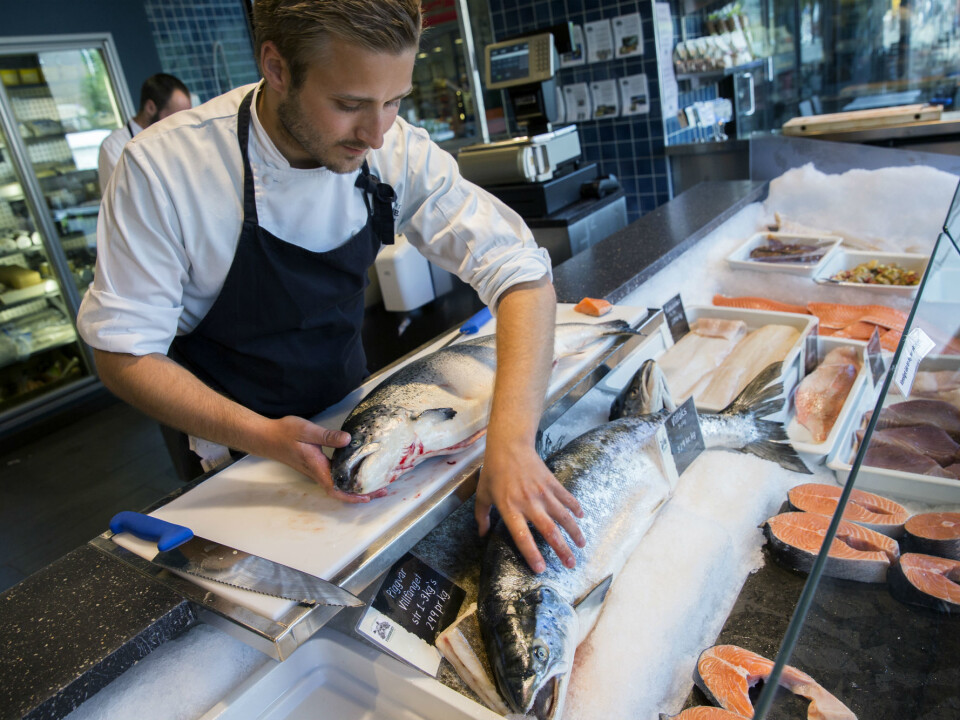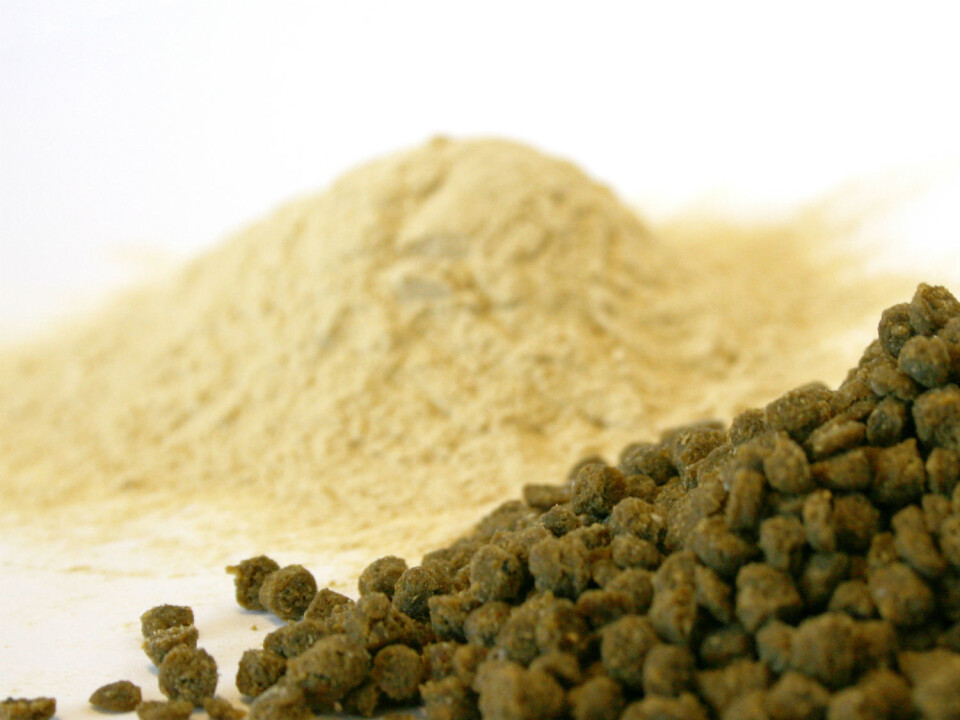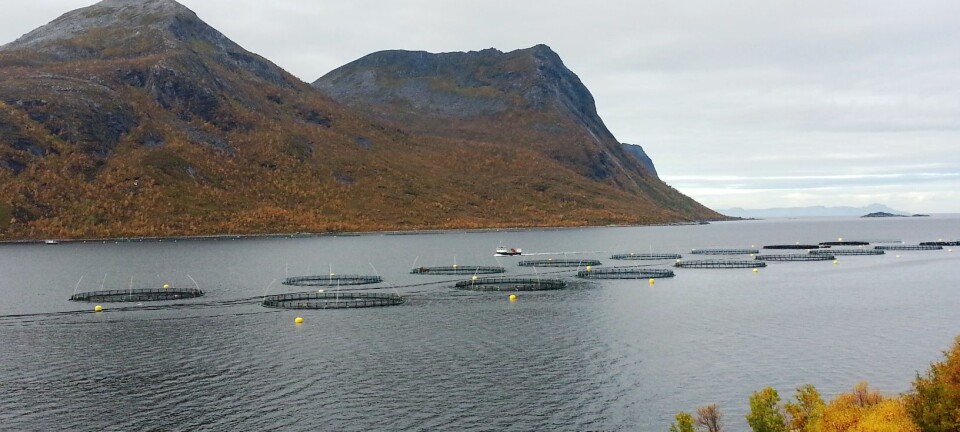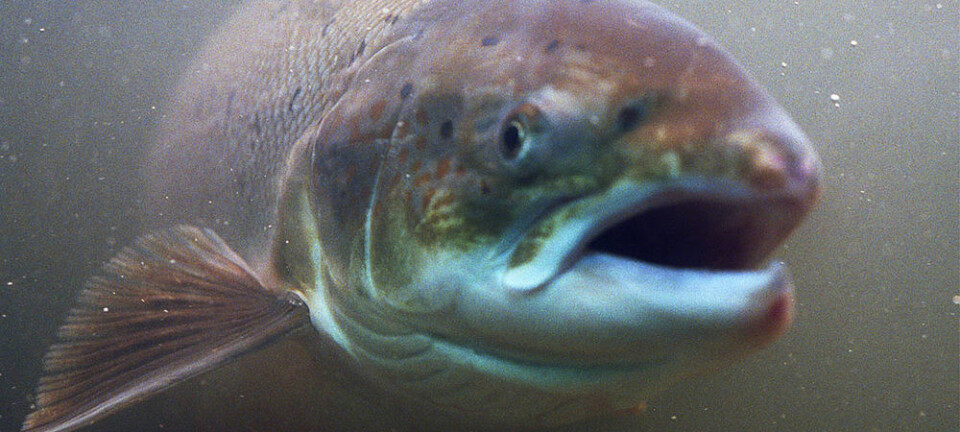An article from Norwegian University of Life Sciences (NMBU)
The fish feed of the future grows in the woods
Yeast produced using chips from Norwegian spruce trees and bacterial meal grown on natural gas from the North Sea become high quality proteins for farmed fish.
Denne artikkelen er over ti år gammel og kan inneholde utdatert informasjon.
It will take as little as one percent of the Norwegian natural gas exports to cover the protein needs of Norwegian farmed salmon.
Although, extensive processes are involved in creating the protein before it can be included as a feed ingredient.
Salmon production is currently at just over one million tons per year, and production is expected to increase substantially in the future.
However, feed resources are scarce. There isn’t enough fishmeal.

Therefore, researchers have tested alternative feed sources. Raw materials from plants now make up about 40 percent of the feed.
Fish are not designed to eat a vegetable diet. They can get problems with inflammation in the fish gut, which in its turn is detrimental to growth and feed utilization. Furthermore, the feed resources that have been used are also human food such as soy.
It is time to look for alternative protein sources.
What we have a lot of in Norway
We have neither soy production nor extensive land area in Norway, but we do have a lot of natural gas and trees.

It is several years now since researchers at the Norwegian University of Life Sciences (NMBU) began research on producing high quality protein from Norwegian resources.
The bacterial meal and the yeast are ingredients used in compound feed, along with fishmeal, plant proteins and plant oils.
Research shows that the bacterial meal as well as the yeast are pure medicine for the inflamed fish gut.
Felipe Eduardo Reveco Urzua at NMBU showed in his doctoral thesis that intestinal health improved at as little as 2.5 percent addition of bacterial meal in the feed.
Adding 15 percent bacterial meal or 20 percent yeast in the feed, prevented the development of intestinal inflammation.
“Growth and feed utilization improved, to nearly the same as for fishmeal,” says Reveco.
What happens in the gut
Gut bacteria play an important role in the development of intestinal inflammation.
The bacterial flora in the fish intestine changes when the fish are eating food that contains high amounts of soy. Reveco found changes in gene expression in microbes in the gut.
However, by using bacterial meal and yeast as feed additives, the gene expression normalized.
In addition, other conditions that occur and change in a negative direction in response to intestinal inflammation were normalized.
Promising and cost-saving
Understanding the interaction between feed ingredients, gut microbes and health are crucial in further research.
“Fish and other animals do not need special ingredients in the feed they eat. What they need is amino acids, fatty acids and other food substances,” says Reveco.
“It is possible to use different things in the feed as long as the diets are balanced seen from the point of view of what nutrients are needed.”
Production of protein from natural gas
Natural gas mainly consists of methane, and methane is what is used a source of both energy and carbon for the bacteria.
Production and fermentation of bacterial meal takes place in large, wide and long tubes where the bacteria multiply and bacterial mass grows in a continuous process.
At one end of the tube natural gas, oxygen, ammonia, minerals and vitamins are added. At the other end of the tube, the bacterial mass is taken out.
The mass is centrifuged and dried and turns into flour with 70 percent protein content.
Yeast from sugar substances
The starting point may be a log or some straw. The log is cut into chips, acids and bases of different kinds are added, and the mass is boiled to remove the lignin. Cellulose and hemicellulose remain.
After this, enzymes developed by NMBU are used to break down the cellulose into sugars that yeasts can grow on. The sugar is used as food in the fermentation process.
Oxygen and other nutrients are also needed in this process. The yeast is harvested, centrifuged and dried. The end product is a mass that contains up to 60 percent protein.
“To give a very brief description of the process , one can say that the fish are eating trees,” Reveco concludes.
So far, the processes of extracting bacterial meal and yeast cannot compete with other animal feed proteins, but the NMBU scientists are convinced that this is where the future animal feed proteins lies.
Reference:
Intestinal microbiota and transcriptomic responses in Atlantic salmon (Salmo salar) fed soybean meal and microbial ingredients. PhD thesis, the Norwegian University of Life Sciences (NMBU).
------------
Read the Norwegian version of this article at forskning.no

































